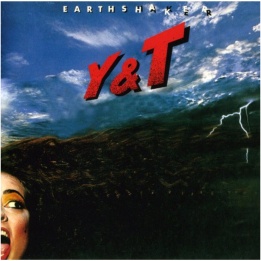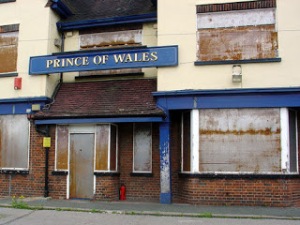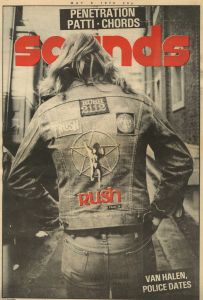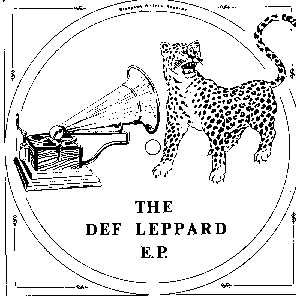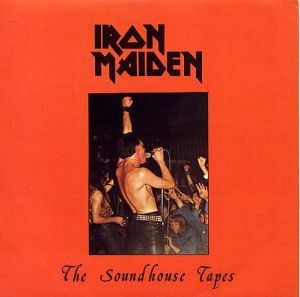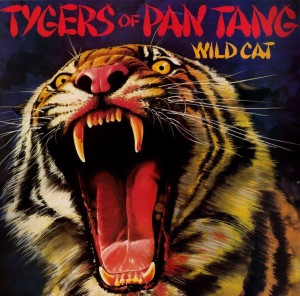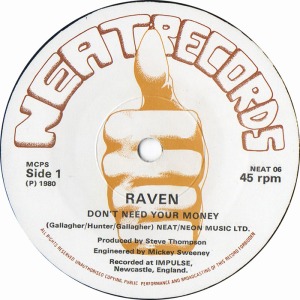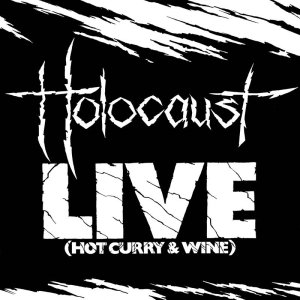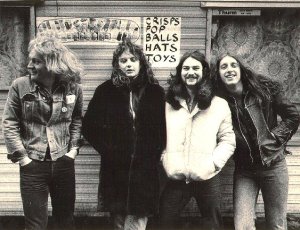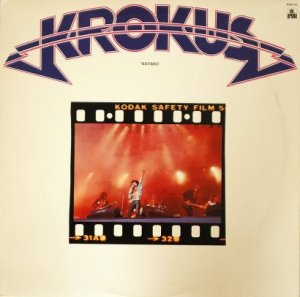When Iron Maiden’s Steve Harris stated in a 2015 interview that ‘Supper’s Ready’, the early Prog Rock epic that takes up all of Side Two of Genesis’ ‘Foxtrot’ album, was his favorite piece of music of all time, it shouldn’t have raised many eyebrows. Harris has made no secret of his love of classic Prog, and there’s ample proof in the grooves; Maiden has covered songs by Prog giants like Jethro Tull and Nektar, just to name a few. But the fact that ‘Supper’s Ready’ clocks in at over 23 minutes hints at a troubling trend in Iron Maiden’s music… You see, for decades, ‘Arry has been suffering with a severe case of the Creeping Epics.
It should also come as no surprize that, as a young Prog fan, ‘Arry hated Punk Rock, but his band (and the entire NWOBHM) absorbed it’s furious energy and in-your-face aggression and channeled it into their own music. It was Iron Maiden’s potent mix of Punk and Prog what set them apart from most of their peers; while most of the Punk-inspired NWOBHM movement was mining the catalogues of Thin Lizzy, UFO, Judas Priest and their ilk for inspiration, Steve Harris was reaching beyond mere rock and metal and toward the expansive creativity and technical complexity of his beloved Prog heroes: ELP, Yes, King Crimson, Focus, and of course the aforementioned Jethro Tull and Genesis.

The undeniable Punk attack of Maiden’s 1980 debut album is accented by several elements borrowed from Progressive Rock: elevated technical skill, complex arrangements, and fantastical subject matter. The clearest example of this unique formula is the mini-epic ‘Phantom of the Opera’. After it’s cryptic opening, ‘Phantom’ blazes across several different movements, twisting and turning through seven minutes and two seconds of neck-breaking tempo changes and intricate instrumental passages. While a song of this length was a bold move for a debut album, Maiden packed more excitement into the 7:02 of ‘Phantom’ than most BHM bands could muster for an entire album, ensuring that the song never overstays its welcome. ‘Phantom’s extended length works to make it the album’s grand statement, ground zero in Maiden’s punk/prog presentation.
The obvious Prog moment on Maiden’s second album ‘Killers’ was ‘Prodigal Son’, a lush, acoustic guitar-laden tune that stands out from the rest of the record with its breezy Wishbone Ash feel and plaintive lyric. As with ‘Phantom’, the song with the strongest Prog influence is also the longest on the record, at 6:05. Maiden would continue to balance creative finesse and snarling aggression on ‘The Number of the Beast’, but by this point, the band’s Punk edge had begun to fade. Their Prog leanings remained, evident in the melodramatic sprawl of album closer ‘Hallowed Be Thy Name’. Another mini-epic, ‘Hallowed’ was, at 7:08, longest song the band had ever recorded… Although a few more albums down the line, 7:08 run-times would be commonplace.
On ‘Piece of Mind’, the band’s progressive side was clearly gaining strength, as nearly every song includes that extra bit of complexity, depth and flair, culminating in the final track ‘To Tame a Land’. ‘Land’ is a work of art, miles outside of conventional NWOBHM songwriting standard, snaking through exotic sonic territories as yet unexplored by Maiden. Here, for the first time, Iron Maiden have stepped squarely into the land of Progressive Metal. There were other signs related to ‘Piece’ as well; Jethro Tull’s ‘Cross-Eyed Mary’ was recorded for a B-side, and Bruce Dickinson’s ‘Revelations’ speaks for itself. Several songs on ‘Piece of Mind’ passed the 6-minute mark; ‘Tame’ tipped the scales at 7:28 to become the new Longest Maiden Song Ever. ‘Piece of Mind’ was also the Longest Maiden Album Yet, at 45:18.
Are we seeing the trend? As the Prog in Maiden’s music becomes more evident, so do the song lengths expand…
On ‘Powerslave’, Maiden strike the perfect balance of NWOBHM attack and adventurous songcraft. Top-notch writing and spirited performances easily obscure the Prog-creep, with 2 songs at 6 minutes-plus, and one at 7:12… That is, until the mammoth final track, Harris’ adaptation of Samuel Taylor Coleridge’s epic poem ‘Rhyme of the Ancient Mariner’. Worry not, for ‘Rhyme’ is a Maiden Masterpiece. While the adapted lyrics might be a little over-stuffed, the underlying arrangement is exceedingly well-constructed. ‘Arry was approaching ‘Supper’s Ready’ territory with ‘Rhyme’s 13:45 run time, but the cinematic sweep of it’s middle sections renders any question of ‘prog excess’ moot. After somehow squeezing another 2 songs onto Side Two, ‘Powerslave’ was the Longest Maiden Album So Far, pushing the limits of vinyl mastering with its 51:12 run time.
‘Somewhere In Time’ is a major mis-step. Steve Harris also wrote three of the 8 tunes on ‘SIT’ himself, and his prog mojo is in full effect here, though this time it doesn’t quite work. Each Harris composition is needlessly long and overwritten; the album’s lead-off track runs 7:22, immediately signaling that something’s up, and there’s really no reason why a straightforward tune like ‘Heaven Can Wait’ should last for 7:24. It must also be said that ‘Arry’s ‘Alexander the Great’ is a failure; at 8:35, it’s an uncharacteristically tough slog through ancient history. These three over-long excursions push the total run-time of the album to 51:18, six seconds longer than ‘Powerslave’, and Maiden’s new Longest Maiden Album. The guitar synths that adorn the album push the Prog Metal envelope even further… or reveal a desire to hide the fact that the band are struggling for inspiration.
Maiden’s average song length had almost doubled over the course of six albums; on ‘Killers’ it was around 3.72 minutes; on both ‘Powerslave’ and ‘Somewhere’ it was 6.37. Album lengths had steadily expanded from the admittedly short 37:35 of their debut to ‘Somewhere in Time’s 51:18. Ironically, Maiden would make some wise adjustments to the excess on their next album, restraining their tendency for epic sprawl while, at the same time, raising the stakes thematically.
Iron Maiden’s seventh album, ‘Seventh Son of a Seventh Son’, is quite a rebound. IMHO, It’s their last great album, and a Prog Metal masterwork. The songwriting this time out was a much more collaborative effort, with Bruce Dickinson garnering several credits, where on ‘Somewhere’ he wrote contributed nada. It’s a concept album (how Prog is that?) that succeeds both musically and thematically. The music still contains plenty of fire & brimstone, and there’s a feeling that the band is once again firing on all cylinders. Song lengths had been paired down to more concise lengths, with one exception: the excellent Harris-penned title track, which works as the centerpiece of the album at a whopping 9:52.
![iron-maiden-seventh-son-of-a-seventh-son-vinyl-record-lp-emi-1988-[5]-40552-p](https://mayobat.files.wordpress.com/2017/08/iron-maiden-seventh-son-of-a-seventh-son-vinyl-record-lp-emi-1988-5-40552-p.jpg?w=553&h=544)
Fans of the early NWOBHM-era Maiden bemoaned the use of synths, the commercial-sounding first single (‘Can I Play With Madness?’) and the slick production. But Steve Harris said, in Mick Wall’s band bio, “I thought it was the best album we did since ‘Piece of Mind’. I loved it because it was more progressive… ‘cause that’s the influences I grew up with.’ Like it or not, the axe-wielding, Thatcher-stabbing, Devil-beheading Iron Maiden was long gone; Eddie was no longer a shadowy figure lurking in dark alleys, he was a time travelling clairvoyant cyborg… Maiden had gone Full Prog. Where to go next?
The average length of a Maiden song had grown by almost 3 minutes, album capacities were being stretched to the limits of manufacturing standards, the epics on each record had gotten even more …epic, the lyrical themes more grandiose. But so far, Iron Maiden had more or less successfully balanced Steve Harris’ Prog Rock tendencies with their NWOBHM roots to become the biggest Metal band on the planet. That delicate balance is the defining element of classic-era Iron Maiden. Stay tuned for Part 2, where we’ll look at how (if?) that balance is maintained during the 1990s and beyond…



